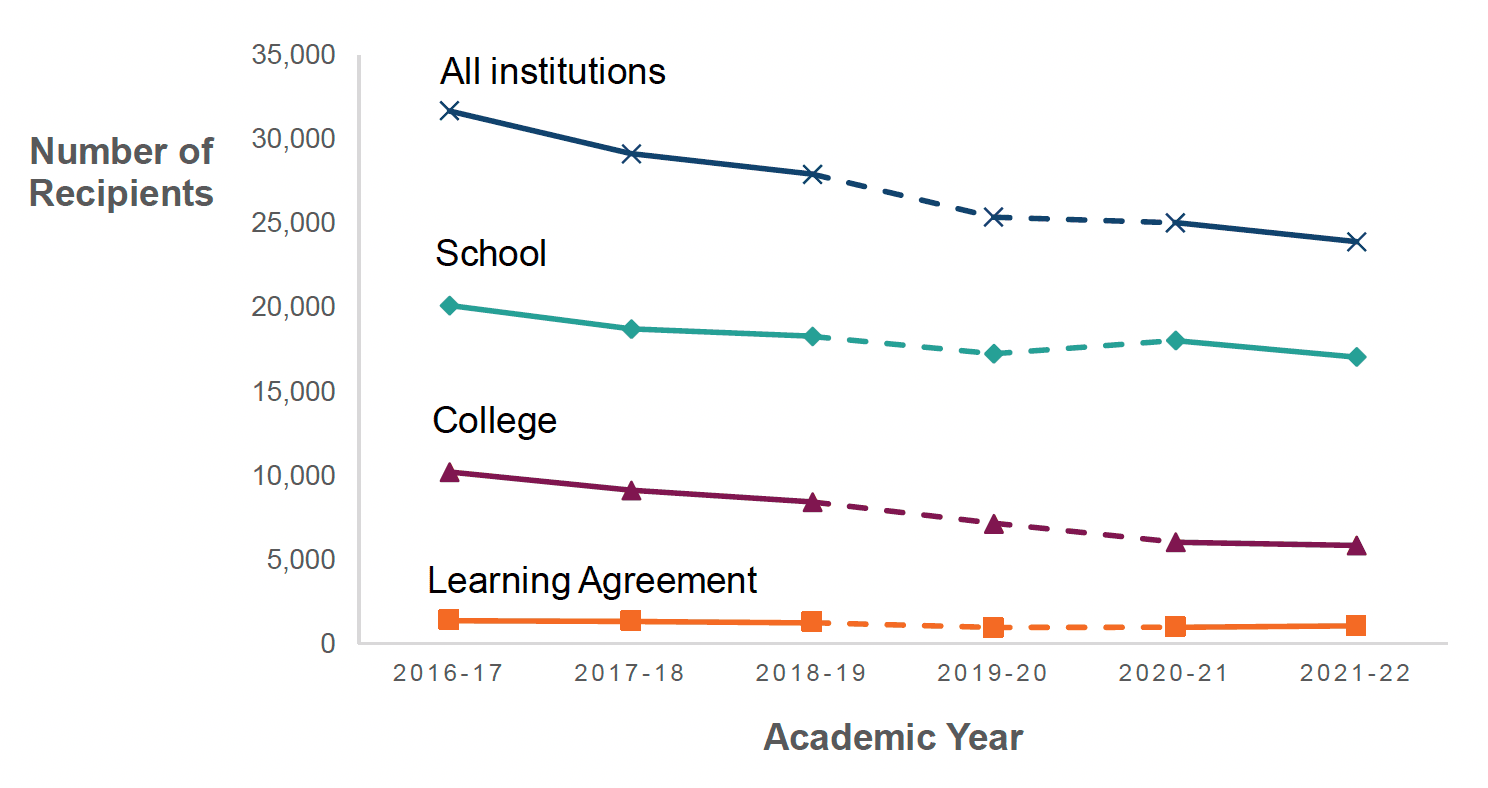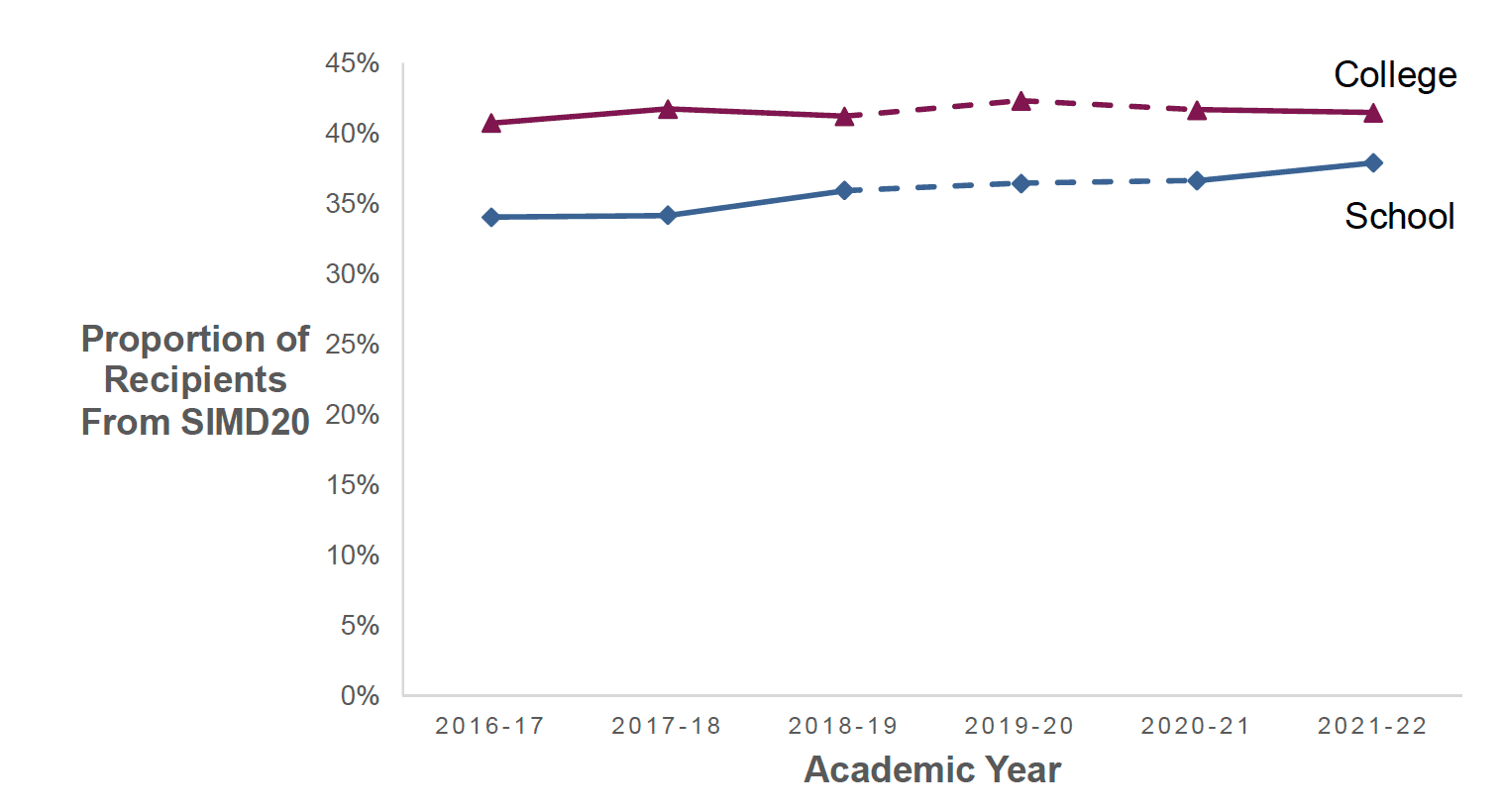Education Maintenance Allowances: 2021-22
Statistics on Education Maintenance Allowance (EMA) recipients and payments made in 2021-2022.
3. EMA recipients
Total numbers
Throughout the 2021-22 academic year, 23,905 young people received at least one EMA payment. This represents a 4.5% reduction on the figure for 2020-21 (25,030).

EMA recipients, by the type of institution, from academic year 2016-17 to 2021-22.
Figure 1 shows that the total number of EMA recipients (all institutions) is decreasing over time. In 2021-22, there were 17,035 recipients in school, down from 18,025 in 2020-21. There were 5,835 recipients in college, down from 6,035 in 2020-21 and 1,035 recipients on a Learning Agreement, up from 970 in 2020-21.
In 2021-22, 71% of EMA recipients were school pupils, 24% were college students and the remaining 4% were young people on Learning Agreements, which is broadly consistent with academic year 2020-21.These proportions have changed over time, mainly due to the reduction in EMA recipients from college, when college bursaries were introduced. In 2016-17, there were 20,110 recipients in school (63%), 10,205 recipients in college (32%) and 1,360 recipients on Learning Agreements (4%).
It is estimated that, around 14.1% of all Scottish young people aged 16-18 were in receipt of EMA in 2021-22. The proportion has been decreasing since 2016-17, when it was around 18.7% of the 16-18 population.
Age
In 2021-22, 64% of EMA recipients were 16 years and under and 33% were 17 years old. Only 3% of recipients were aged 18 years and over.
Young people cannot receive EMA until they reach 16 years of age. However, as the analysis is based on age as at 30th September of the academic year, some recipients are recorded as being 15 years old.
There has been a notable drop in recipients aged 18 and over at college in recent years, from 1,970 in 2016-17 to 415 in 2021-22. Again, this is due to the fact that colleges have moved from providing EMA payments to bursaries for eligible 18-year old's.
Gender
In 2021-22, 51% of overall EMA recipients were female and 49% were male. This is consistent with the historic trend that more females receive EMA than males.
This pattern is observed in schools, as 51% of recipients are female and 49% of recipients are male; and colleges, where 52% of recipients are female and 47% are male (1% are recorded as 'Other').
Deprivation
Deprivation is measured using the Scottish Index of Multiple Deprivation (SIMD).
In 2021-22, 39% of all EMA recipients were from the 20% most deprived areas, an increase of 1 percentage point from 2020-21.
However, due to the overall decrease in the number of EMA recipients, the actual number of recipients from the 20% most deprived areas has decreased to 9,310, from 9,525 in 2020-21.

Proportion of EMA recipients from the 20% most deprived areas, at school and college, from academic year 2016-17 to 2021-22
Figure 2 shows that 38% of EMA recipients in school and 41% of college recipients were from the 20% most deprived areas. The figure shows that colleges consistently have a higher proportion of students from deprived areas, compared to schools.
Contact
Email: FHEstatistics@gov.scot
There is a problem
Thanks for your feedback